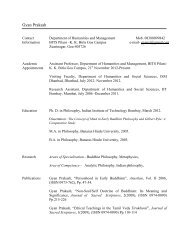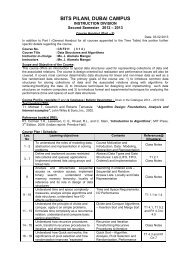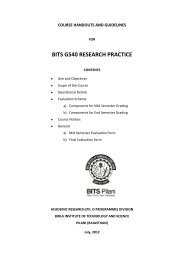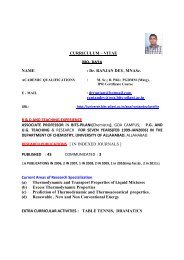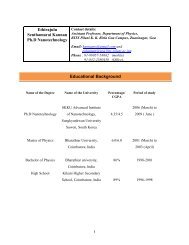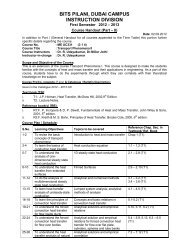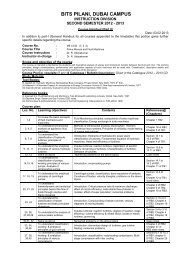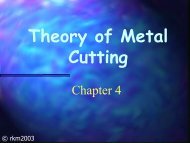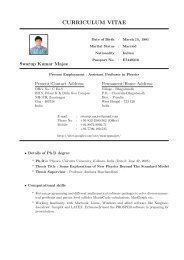associative entity
associative entity
associative entity
Create successful ePaper yourself
Turn your PDF publications into a flip-book with our unique Google optimized e-Paper software.
Data Processing<br />
AAOC C311<br />
I Semester 2012 – 2013<br />
CLASS – 5<br />
Agenda:<br />
Understanding Degree and Cardinality with<br />
Examples<br />
© Prentice Hall, 2002<br />
1
Unary relationships
Binary relationships
Ternary relationships<br />
Note: a relationship can have attributes of its own
Basic relationship with only maximum cardinalities showing<br />
Mandatory minimum cardinalities
Optional cardinalities with unary degree, one-to-one relationship
A binary relationship with an attribute<br />
Here, the date completed attribute pertains specifically to the<br />
employee’s completion of a course…it is an attribute of the<br />
relationship
A ternary relationship with attributes
A unary relationship with an attribute. This has a manyto-many<br />
relationship<br />
Representing a bill-of -materials structure
Examples of multiple relationships – entities can be<br />
related to one another in more than one way<br />
Employees and departments
Professors and courses (fixed upon constraint)
Strong vs. Weak Entities, and<br />
Identifying Relationships<br />
Strong entities<br />
– exist independently of other types of entities<br />
– has its own unique identifier<br />
– represented with single-line rectangle<br />
Weak <strong>entity</strong><br />
– dependent on a strong <strong>entity</strong>…cannot exist on its own<br />
– Does not have a unique identifier<br />
– represented with double-line rectangle<br />
Identifying relationship<br />
– links strong entities to weak entities<br />
– represented with double line diamond
Strong and weak entities<br />
Strong <strong>entity</strong><br />
Identifying relationship<br />
Weak <strong>entity</strong>
Associative Entities<br />
<br />
<br />
<br />
It’s an <strong>entity</strong> Type – it has attributes<br />
AND it’s a relationship – it links entities together<br />
When should a relationship with attributes instead be an<br />
<strong>associative</strong> <strong>entity</strong><br />
– All relationships for the <strong>associative</strong> <strong>entity</strong> should be many<br />
– The <strong>associative</strong> <strong>entity</strong> could have meaning independent of the other<br />
entities<br />
– The <strong>associative</strong> <strong>entity</strong> preferably has a unique identifier, and should also<br />
have other attributes<br />
– The <strong>associative</strong> may be participating in other relationships other than the<br />
entities of the associated relationship<br />
– Ternary relationships should be converted to <strong>associative</strong> entities.
An <strong>associative</strong> <strong>entity</strong> (CERTIFICATE)<br />
Associative <strong>entity</strong> involves a rectangle with a diamond inside.<br />
Note that the many-to-many cardinality symbols face toward<br />
the <strong>associative</strong> <strong>entity</strong> and not toward the other entities
an <strong>associative</strong> <strong>entity</strong> – bill of materials structure<br />
This could just be a relationship with<br />
attributes…it’s a judgment call
Ternary relationship as an <strong>associative</strong> <strong>entity</strong>
ER Example : Question<br />
© Prentice Hall, 2002<br />
18
ER - Example<br />
© Prentice Hall, 2002<br />
19
ER - Example<br />
Course_<br />
Number<br />
Course_<br />
Name<br />
COURSE<br />
Is_prerequisite<br />
Units<br />
© Prentice Hall, 2002<br />
20
Next Lecture on ….<br />
Enhanced ER<br />
ER Question: A student works for a school<br />
that he/she attends. Assuming necessary<br />
attributes draw an ERD to model the<br />
situation.<br />
© Prentice Hall, 2002<br />
21




